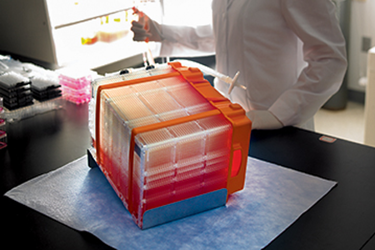Expansion Of Human Bone Marrow-Derived MSCs With Corning® MSCulture Max™-XF Media And Corning HYPERStack® Cell Culture Vessels
By Hilary Sherman and John Shyu, Corning Life Sciences

Mesenchymal stem/stromal cells (MSCs) are of significant interest for cellular therapy due to their multipotency and role in immunoregulation. However, achieving the necessary scale for clinical application workflows—often requiring 2 x 106 cells/kg of body weight—presents a challenge. This study demonstrates a highly efficient method for expanding bone marrow-derived MSCs.
Using the Corning® HYPERStack® 36-layer cell culture vessel paired with Corning MSCulture Max™-XF media, researchers achieved a total MSC yield of over 870 million cells from a single vessel, with cell densities ranging from 4.4 x 104 to 5.2 x 104 cells/cm2 after five days. Critically, the harvested cells maintained high quality, exhibiting greater than 90% average viability and expressing the necessary positive surface markers (CD90, CD105, and CD73) at over 99%. This protocol offers an effective strategy for meeting the growing demand for large-scale, high-quality MSCs5.
Download the full application note to review the complete materials and methods protocol.
Get unlimited access to:
Enter your credentials below to log in. Not yet a member of Cell & Gene? Subscribe today.
